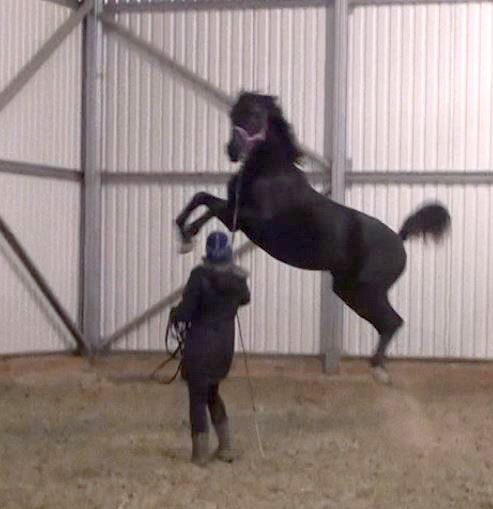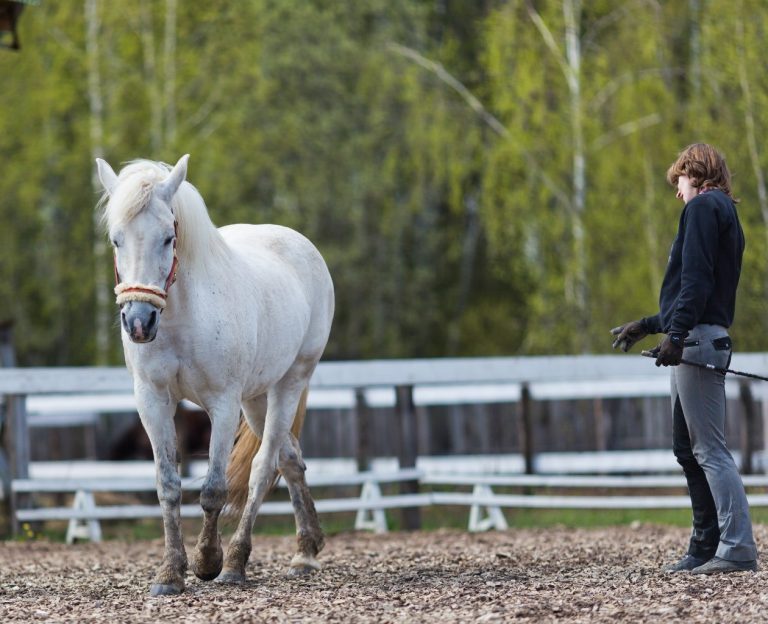
Learning to Understand Horses
Learning to Understand Horses
Как According to psychologists, the bulk of communication problems arise due to misunderstanding. Communication with horses is no exception. Only if, in the case of people, business usually leads to spoiled mood and relationships, then in conflicts with a horse, everything can end for a person is much more sad – serious injuries.

Statistics cited by Australian hippologist Andrew McLean suggest that equestrians who do not haveknowledge about the behavior of horses, are much more likely to get injured when dealing with them.
This is because without the necessary knowledge it is very difficult for a person to train a horse correctly. And inadequate training can greatly impair the well-being of the horse, which ultimately provokes conflict behavior, which endangers the health and life of a person.
To prevent this from happening, it is extremely important even before you go to build a relationship with a horse, to study the features of his psyche and behavior, as well as to understand what and how to teach him.
«PasprA common misconception is that training is only necessary horses, although in reality riders also need to have a deep understanding of equine behavior.” — Andrew McLean, hippologist.
Why do we misunderstand horses?
Horses and humans are two completely different species. We have different sets of communication signals, we express emotions and intentions in different ways.
The ability to understand the language of our relatives is partly genetically embedded in us, and partly developed in the earliest period of our lives. We learn to understand other kinds of creatures as we grow up in their environment. At a young age, the brain is open to this kind of information, it is easily absorbed and becomes part of our nature and behavior. This applies to all kinds of animals.

There is no fear where there is the ability to understand behavior and read intentions!
For example, my dog, being surrounded by horses every day since the age of three months, has learned by itself to perfectly understand them and “read” their intentions. When they were relaxed and at peace, he lay under their muzzles on his back and let them scratch his belly with their noses. But as soon as one of the horses got into a playful or aggressive mood and planned to bite or hit, the dog instantly understood this and jumped aside. Many dogs, who did not have the opportunity to communicate closely with horses as a puppy, experience fear when they meet them, because they do not understand their behavior. The horse may simply reach out to explore the new object, and the dog may perceive this as a threat and attack in response. So from scratch, due to misunderstanding, a sharp conflict will develop.
The same is often the case in human-horse relationships, unless the person has had early experience with horses.
However, even if you did not have such experience, you can catch up at any age! But since the early mechanisms for getting information will no longer work, you will need:
– get systematic knowledge about the psychology, behavior of a horse (articles from the EquiSense section will help you with this)
– for some time to observe the interaction of people and horses from the side.
You will surely see examples of successful and unsuccessful interactions, and with some knowledge you will already be able to figure out for yourself where people interpret horse behavior correctly and where they make mistakes. You will also understand what such errors lead to.
The dangers of anthropomorphism
Another huge obstacle to understanding the horse is anthropomorphism, or humanization. This is the desire to endow plants, animals, objects, and so on with human properties.
Remember the last time you scolded the computer for slowing down, felt sorry for the thrown thing because it was “lonely and abandoned”, were offended or cursed at the sofa because it beat off (and intentionally) your little finger? All these are examples of anthropomorphism in relation to objects that certainly do not have human properties. And transferring all this to animals is doubly tempting for humans!

“People often use terms to describe horses such as “bold”, “loyal”, “reliable”, “hooligan”, “evil”, “willful”, “evil”, “strict”, and she is said to “hate”, “love”, “sorry”, “sympathize”, and “have the will to win”, as well as “generous” and “cooperative”. But it is clear that the application of human properties to horses can be very detrimental to their well-being due to certain consequences. Paul McGreevy and Andrew McLean “Equitation Science”
Often we talk to a horse, give him tasks, ask or demand answers from him and try to motivate him in the same way as we would in a dialogue with another person. Perhaps this is how you communicate with your horse! If it seems to you that you are explaining everything to the horse as clearly as possible (the other person would understand for sure!), But the dialogue still does not occur, perhaps the problem is precisely in the anthropomorphic approach.
People also tend to interpret animal behavior in terms of their own motives, desires, and motivations. However, when dealing with behavioral problems, the success of the “treatment” will directly depend on the correct “diagnosis”. In other words, you can effectively correct behavior only by correctly identifying the cause. This is where anthropomorphism usually does a disservice. We believe that the horse is guided by some higher and complex motives, and the simple reason remains unnoticed and misunderstood. The problem is not solved for months and years, relations are complicated.

Horse “hooligan” or does she have any problems?
So, for example, we can say that a horse is “bullying”. But one must ask the question, does the human concept of “hooliganism” apply to a horse? The statement “the horse is a bully” will inevitably shift the blame from the trainer to the horse. But will the punishment be justified in this case? Perhaps the bullying horse is really just confused, frightened, uncomfortable, or his need to move is not sufficiently satisfied. Thus, the use of human “labels” will prevent us from establishing the true causes of the problem and effectively solving it.
“Until recently, the behavior of horses was most often explained from an anthropomorphic point of view; but, at best, it is useless, and, at worst, it can greatly undermine the well-being of the horse, especially when we attribute some undesirable behavior of the horse to its malicious intent. Paul McGreevy and Andrew McLean, “Equitation Science”
If you really want to understand the horse and speak the same language with him, it is very important to abandon anthropomorphism and learn to look at the situation “through the eyes of a horse.”

It is important to explain something to the horse in a way that is accessible to her.
As you will learn from the materials of the EquiFlow method below, the psyche of the horse is different from the human, and it is unreasonable to expect the same reactions from it as any normal person would give you in a given situation. It is important to study the peculiarities of the horse’s psyche in order to correctly understand the reasons for this or that behavior, set tasks and explain something in a way that is accessible to her.
We are ready to share this information with you. This knowledge has been helping us to solve problems in the work with horses for many years efficiently, quickly and with the least discomfort for all involved. But in order to perceive all this information correctly, try to forget about anthropomorphism at least for a while and look at the horse from a different perspective. Return to the old approach, if something does not suit you, you will always have time.
By the way, refusing anthropomorphism, we in no case stop seeing a living being in a horse and do not deny the fact that it can experience emotions and feelings! We only recognize that the psyche of the horse is different from ours. This means that we should try to interpret her behavior from a horse’s point of view, not from a human point of view, and use tools and techniques that she can understand to communicate with her!
“People inevitably look at horses” from their bell tower, through the prism of their dreams and ambitions, myths and fears, vanity and fashion. Stephen Budiansky, writer
If you are open to new information and ready to reconsider some of the views on communication with a horse, start studying the psychology and behavior of horses with the section “Species of Horses”.





